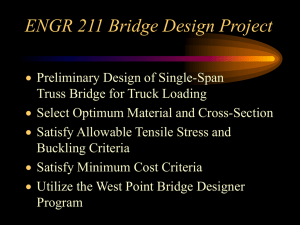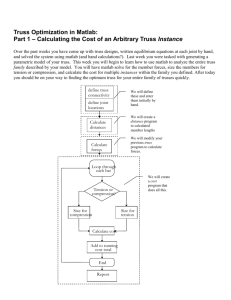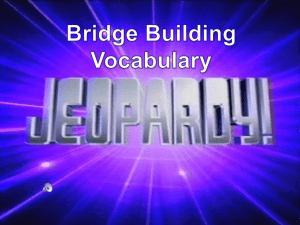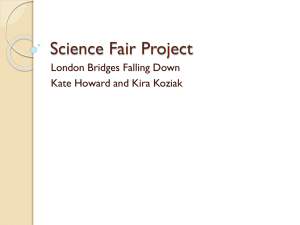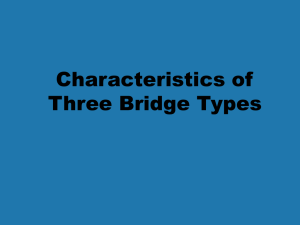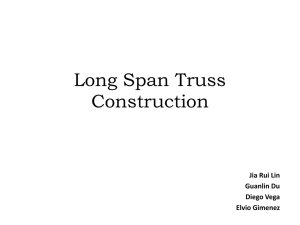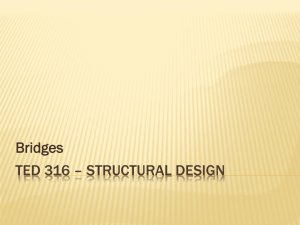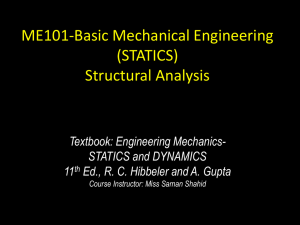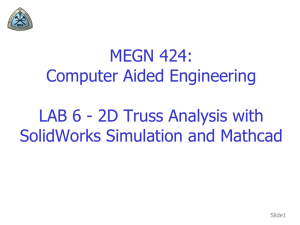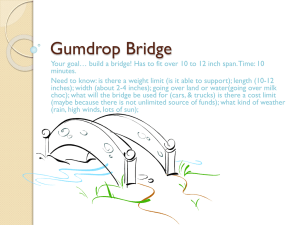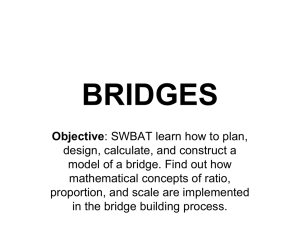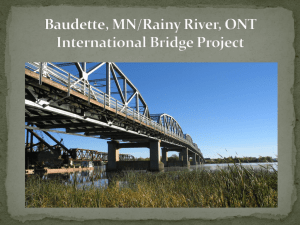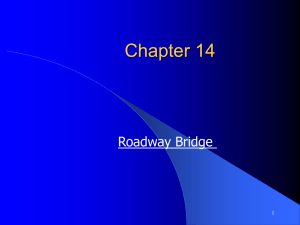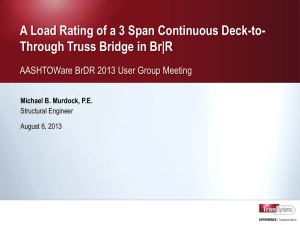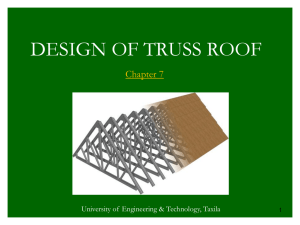Testing and Analyzing File Folder Bridge Members
advertisement
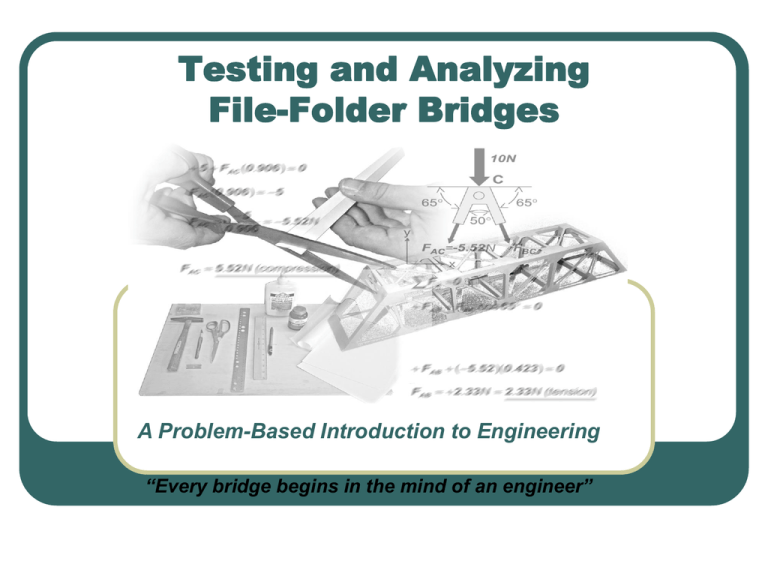
Testing and Analyzing File-Folder Bridges A Problem-Based Introduction to Engineering “Every bridge begins in the mind of an engineer” Our Purpose build and test model bridge members; apply math, science, and computer technology as problem-solving tools; learn how real bridges are designed and built; and learn how real truss bridges work. Overview of the Activities Activity #1: Test the strength of structural members. • Build specimens for tensile strength testing • Build specimens of compressive strength testing • Use graphical techniques to calculate tensile and compressive strength of bridge members Activity #2: Analyze and evaluate a truss. • Draw force diagrams for bridge joints • Calculate internal member forces • Calculate factors of safety according to building codes Activity #1 Goals Explain what a truss is. Identify the major components of a truss bridge. Identify the types of truss bridges. Explain the following fundamental structural engineering concepts: force, load, reaction, equilibrium, tension, compression, and strength. Explain how a truss bridge works—how each individual component contributes to the ability of the entire structure to carry a load. Explain how construction quality affects the performance of a structure. Component Parts of a Truss Bridge What is a Truss? A truss is a structure composed of members connected together to form a rigid framework. Members are the load-carrying components of a structure. In most trusses, members are arranged in interconnected triangles, as shown below. Component Parts of a Truss Bridge What is a Truss? Because of this configuration, truss members carry load primarily in tension and compression. Because trusses are very strong for their weight, they are often used to span long distances. They have been used extensively in bridges since the early 19th century; however, truss bridges have become somewhat less common in recent years. Today trusses are often used in the roofs of buildings and stadiums, in towers, construction cranes, and many similar structures and machines. Component Parts - Elevation View Component Parts - Isometric View Types of Truss Members Connecting the Members: Pinned and Gusset Plate Pinned connections were used extensively throughout the 19th century. Most modern bridges—including the model bridge we will be building here—use gusset plate connections. The Foundation Bridges use two different types of foundations. The ends of a bridge usually rest on abutments, which serve two functions simultaneously—they support the bridge and also hold back the soil that is filled in behind them. If the bridge requires additional support in the middle of the gap, one or more piers are used, as shown below. Abutments and piers are normally made of concrete. Types of Truss Bridges If the deck is located at the level of the bottom chord, the bridge is called a through truss. A pony truss looks just like a through truss, except it is not as high and has no lateral bracing between the top chords. If the deck is located at the level of the top chord, the bridge is called a deck truss. Through Truss – 15th street bridge, Durango, Colorado Pony Truss - East Sweden, TexasPony Truss Bridge over Onion Creek Deck Truss - I91 over the Williams River near Rockingham, Vermont 15 of the most common truss configurations Typical Connections The two isometric drawings below are typical gusset-plate connections found at the top and bottom chords of the main trusses. These drawings illustrate the types of structural members used throughout the Grant Road bridge—hollow tubes for the top chords and verticals; doubled bars for the bottom chords and diagonals. The drawings also show how two gusset plates are used at each connection to hold all of the structural members together. Schedule of Truss Members The Schedule of Truss Members identifies every member required to build the bridge. Note that each member is identified by the two letters corresponding to its endpoints. For example, Member AD is a segment of the bottom chord that goes from Connection A to Connection D.

